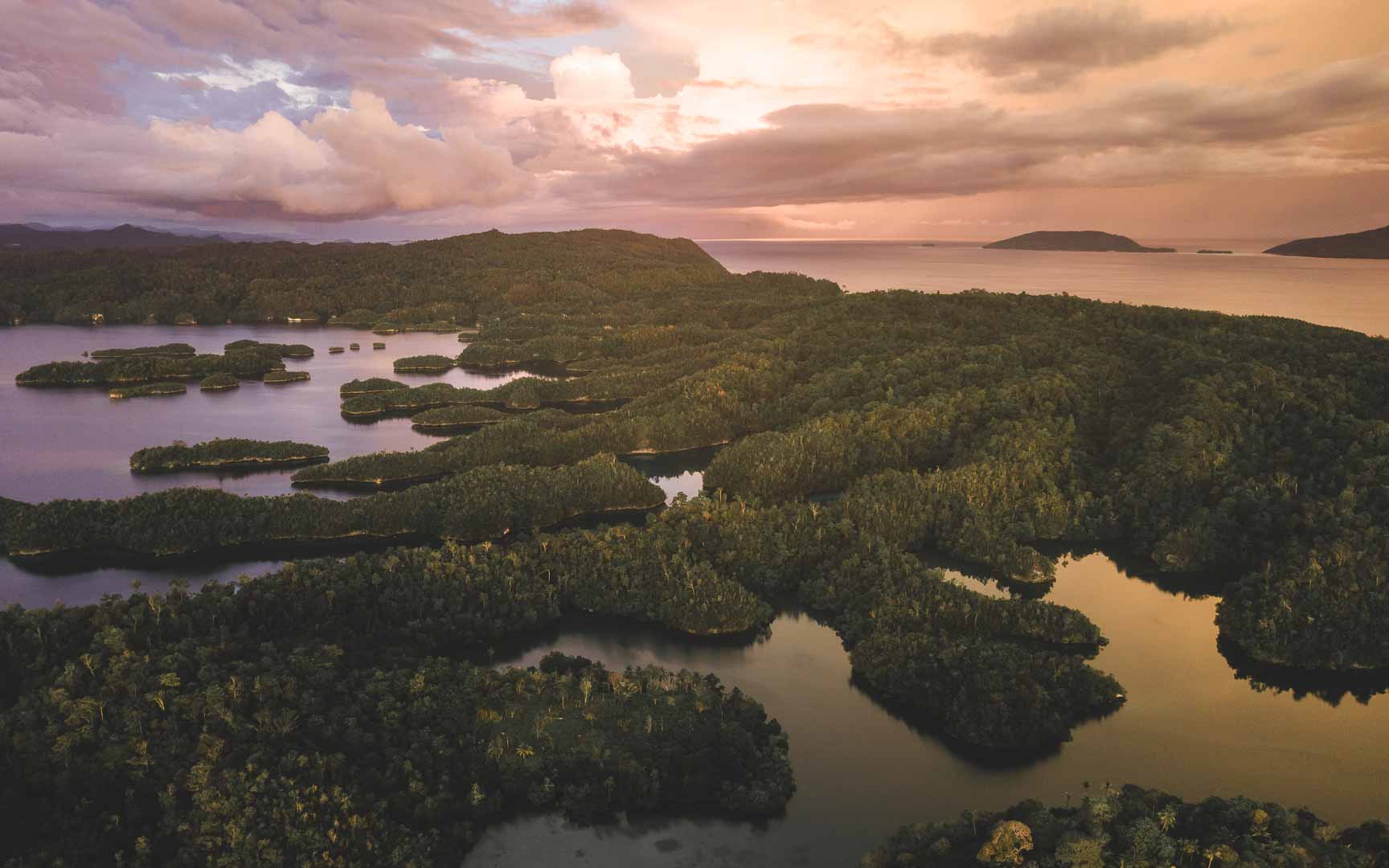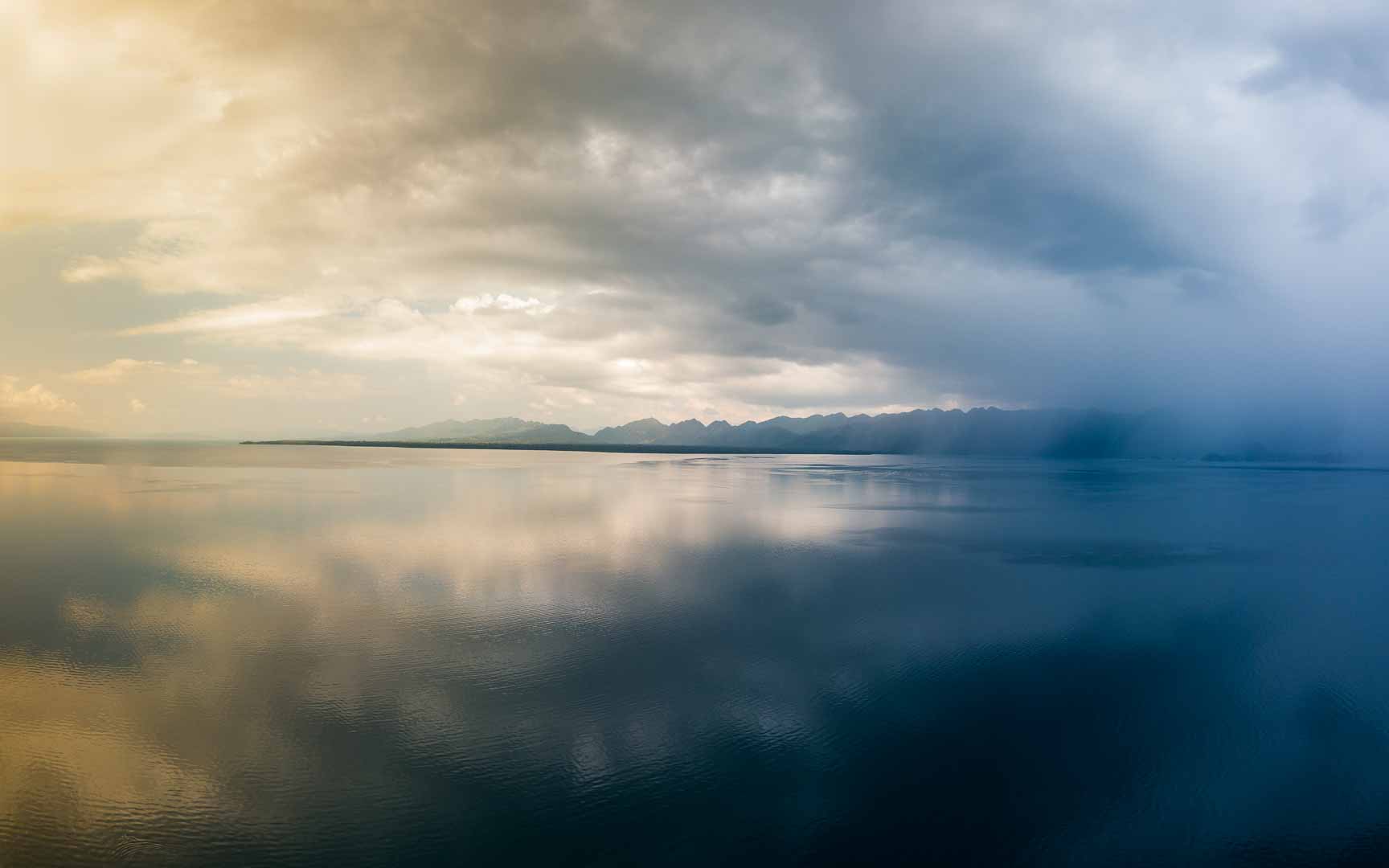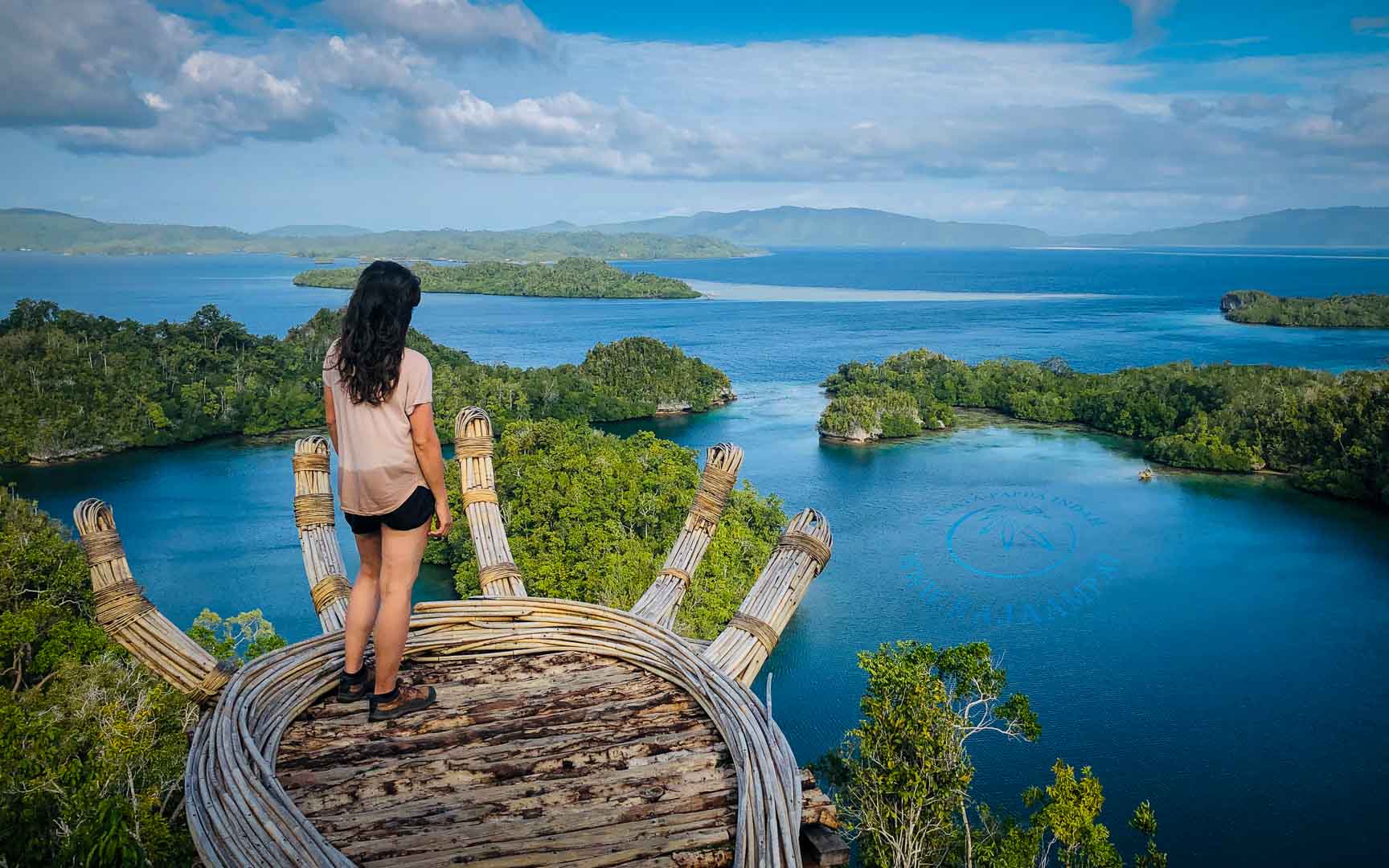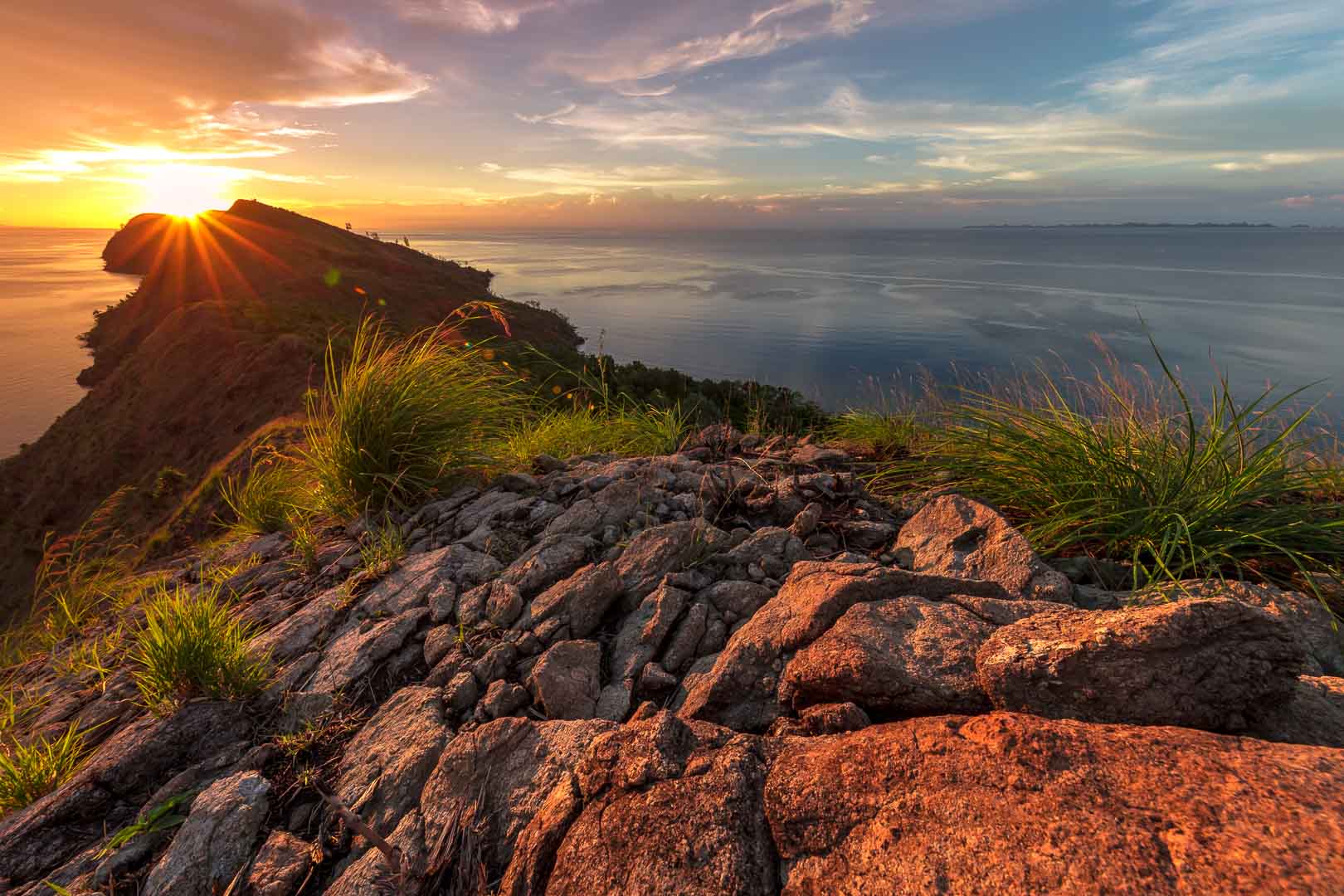Weather & Climate
in Raja Ampat
Raja Ampat's Climate
Located on the equator, Raja Ampat is hot and humid throughout the year. There are seasonal changes , but these are tendencies rather than guarantees.
General Climate
During the days temperatures typically reach 31°C and rarely drop beneath 24°C at night. However, relative humidity is on average above 80%, which can make it feel hotter. Sun rises at around 06:00 and sets shortly after 18:00 throughout the year.
Microclimates
Raja Ampat's weather is influenced by the islands' microclimates a lot, making it hard to predict . Noticeably in the evenings, clouds can build up over the larger islands often leading to localized rainstorms.
Sea Conditions
With an average surface temperature of 29°C, the sea is warm year-round. The tidal currents can be very strong, especially where water movements are channeled by islands and reefs. Large swells are rare and usually limited to the exposed shores in the very north and very south.
Forecast
Raja Ampat
Predicting Raja Ampat's Weather
Don't take weather forecasts for granted. In this part of the world weather stations are sparse and the lack of data simply does not allow accurate forecasts. In addition, the islands' microclimates make it even harder to predict anything with certainty.
Location-based predictions will almost always show rain for Raja Ampat. They are not wrong, it almost always does rain somewhere on the islands, but more often than not these are localized downpours.
Should you ignore forecasts completely?
No. Meteorology has improved significantly over the past decade. The limitation is simply the low density of data points in Raja Ampat. Just remember, look at tendencies rather than actual predictions for particular points of time.
Here are two of our preferred weather services:
Weather Maps
They are your best friend. Once you get used to satellite and radar weather maps, you will find them to be a very powerful tool when it comes to assessing the general weather situation.
Our favourite weather maps:
Wet Season in Raja Ampat
Although there are seasonal changes in Raja Ampat, they are far less dramatic than in other Monsoon-regions. Unlike the rest of Indonesia, wet season in Raja Ampat is just as good a time to visit as any other.
To be very clear: It can rain any day, any time of the year. However, you have better chances for sunny days during northwest-Monsoon.
On the upside, storms are often small enough to simply take a short detour around them .
Southeast Monsoon
May to September
Statistically, these are the months with the most precipitation. However, by no means will it rain all day every day. Again, rain is usually localized and more often than not can be avoided, while on a boat.
Northwest Monsoon
October to April
This is the "dry"-season with less precipitation on average, but again: it will rain. At the height of the northwest-Monsoon in December and January, Raja Ampat usually gets its heaviest rains. That's why some call this time of the year the second wet season.
Seasonal
Winds
Southerly winds on Wayag's viewpoint in July
Windy Season in Raja Ampat
As with the rain mentioned above, even at the height of the seasons it won't be windy all day, every day. Over the years we have experienced seasons without any noteworthy breeze all the way to gale-like winds for days.
Southerly Winds
July & August
Usually during the height of the southeast-Monsoon in July and August, there can be strong southerly winds and choppy seas during the day. Most of the time the wind dies and the sea calms down over night. However, occasionally the breeze can hold for a few days and nights, resulting in rather unpleasantly choppy sea.
Northwest Wind
December & January
At the height of the northwest-Monsoon in December and January there is a chance of strong winds during the day. Especially in the northern parts of Raja Ampat, large swells can build up during this time.
Best Holiday Season in Raja Ampat
As mentioned above, any time is good to visit Raja Ampat. There is no real off-season. Depending on what you want to do, there may be preferred travel times, but we have been here long enough to tell you it does't matter all that much.
Less Tourism
If you prefer a time with little visitors, we can recommend April and May as well as September and October. Theses shoulder-seasons usually see less tourists than the rest of the year, while still offering good weather conditions. Especially around Christmas and New Year Raja Ampat's famous spots can be - relatively - crowded.
Underwater Conditions
The seasons have little to no influence on the conditions you will encounter underwater. The visibility changes locally according to wind and waves. Some of the marine-megafauna migrates throughout, but we know where to find it.
Get the Best Experience
Take our Advice
To make your trip enjoyable, we try to avoid choppy crossings and strong winds, since not everyone is as used to the sea, as we are.
Therefore, we kindly ask you to take our advice in case we think changes to the itinerary are beneficial or necessary due to weather conditions.
Weather may be unpredictable, but we know Raja Ampat by heart and we will make sure you get the best possible experience.
Travelling by Boat
There are times when offshore crossings can be very rough. One determining factor is time - in heavy seas and strong winds some routes can take up to four times longer than they usually would - but most importantly are safety considerations.
Responsibility
In accordance with our terms and international marine law (ISM and SOLAS), on board a vessel the captain has overriding authority. Ultimately, decisions regarding routes and destinations always lie with the captain, who has our full support on matters concerning safety at sea.




